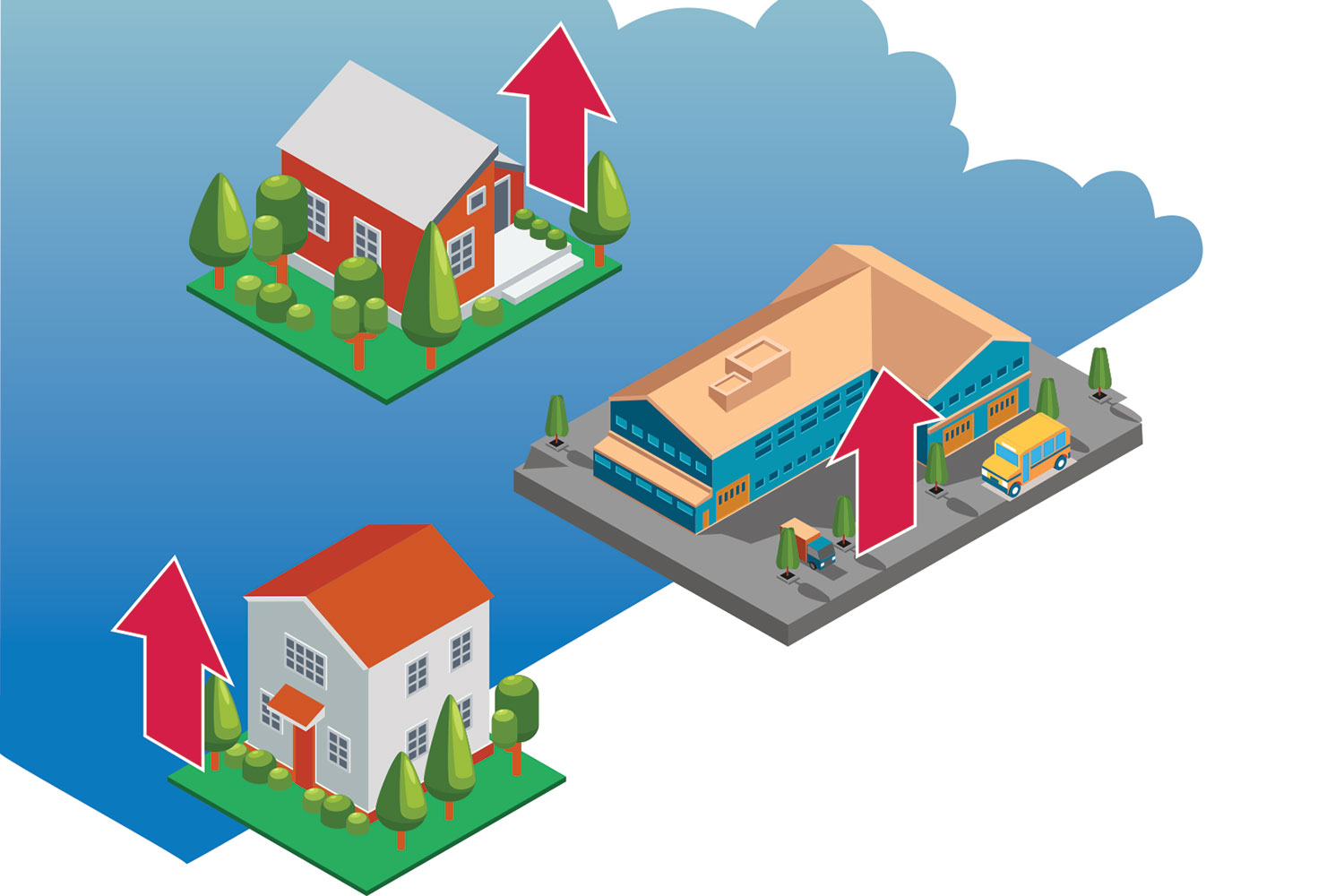
Jan. 24, 2020 | Geoff Geddes
An invisible threat: How to identify and eliminate the dangers of radon in the home
If you thought the in-laws were bad house guests, what about a cancer-causing gas?Radon is a radioactive gas that is formed when naturally occurring uranium deposits in soil and rock decay. It is invisible, odourless and tasteless, and can accumulate inside homes – sometimes reaching dangerous levels.
Radon moves from the soil into homes through cracks in the foundation or gaps where the foundation meets the wall. Negative air pressure causes the home to make up the difference by drawing in soil gas.
Although radon accumulation in homes is not a new phenomenon, our modern lifestyle may put us at a higher risk than ever before.
"We spend more time inside now," said Colin Dumais, building science and technical director for Radon West Ltd. and director of the Canadian National Radon Training Centre. "When I was growing up, parents used to say, 'Go outside and don't come back until dinner,' but now they're calling kids inside because they can't watch them otherwise."
"Radon in the home is entirely preventable. Knowing your home's radon level is the first step in determining if you are at risk." - Dr. Aaron Goodarzi, Canada Research Chair in Radiation Exposure Disease
Today, radon is the second leading cause of lung cancer. However, there's good news for anyone who is worried about radon in their own home.
"Radon in the home is entirely preventable," said Dr. Aaron Goodarzi, the Canada Research Chair in Radiation Exposure Disease and an assistant professor at the University of Calgary. "Knowing your home's radon level is the first step in determining if you are at risk."
Through several studies, Dr. Goodarzi and his colleagues are working to increase awareness of radon gas and encourage people to test their homes. They are also examining radon levels across the country and reviewing a variety of home metrics to help understand what is unique about houses with high radon levels.
"We recently published findings that demonstrate the inaccuracy of short-term radon testing compared to long-term testing," said Dr. Goodarzi. "Short-term testing is a common practice during a real estate purchase. Because of the inaccuracy, we are educating REALTORS® to not perform a short-term test at this time."
Fortunately, testing your home for radon is easy, effective and inexpensive. Through Evict Radon, a non-profit organization led by Dr. Goodarzi, homeowners can purchase a radon testing device for $51.99, follow the instructions over 90 days and ship the device to a lab for the results.
Addressing the problem, however, is a bit more costly.
"Fixing a radon issue is usually around $2500, but it can be more," said Dumais. "It's a matter of altering the pressure beneath the house, so radon goes from your home to the ground, rather than vice versa."
For Realtors and home sellers, it's important to note that a home mitigated for radon has the healthiest possible air and, as a result, is very desirable.
"High radon does not devalue real estate," said Dr. Goodarzi.
Also, unlike the in-laws, once you rid your home of radon, it should be gone for good.
Tagged: Calgary | Calgary Real Estate | Calgary Real Estate News | Calgary Real Estate News | Cancer | Feature | House & Home | Housing Market | New Communities | Radon | Radon Gas | REALTORS | Safety | University of Calgary




